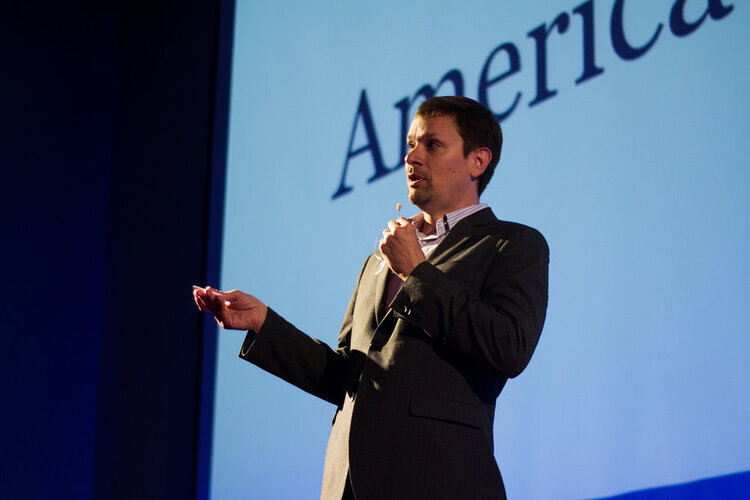Winds of Change in Kansas City
Upzoned host, Abby Kinney, and Strong Towns senior editor Daniel Herriges.
Kevin Klinkenberg, an urban designer and writer in Kansas City.
This year, thanks to a grant from the Enid & Crosby Kemper Foundation and support from members like you, Strong Towns has taken an in-depth look at the growth of Kansas City, Missouri and the financial ramifications of its development pattern. The series was based on a detailed survey of Kansas City’s fiscal geography—its sources of tax revenue and its major expenses, its street network and historical development patterns—conducted by geoanalytics firm Urban3. The series comprises ten articles in all, as well as several related podcasts. A few key articles have now been compiled into a new ebook that was released today.
What makes Kansas City such a powerful case study is not that it is an outlier among North American cities. Quite the opposite. Kansas City may no longer have the most freeway miles per capita (they were recently edged out by Nashville), but it is still a powerful object lesson in how the suburban experiment—the conventional approach to building towns and cities since the 1950s—drains wealth, squanders precious financial resources, and makes our communities fragile. And yet, as our senior editor, Daniel Herriges, wrote in the series conclusion, Kansas City also has everything it needs to turn this ill-conceived experiment around.
But will it?
In this special episode of Upzoned, we’re turning the tables: Daniel is interviewing regular host Abby Kinney, an urban planner in Kansas City, as well as special guest Kevin Klinkenberg, an urban designer and the executive director of Midtown KC Now. The three of them discuss how COVID-19 has illuminated and intensified Kansas City’s budget woes, the city’s biggest near-term challenges, and why Kansas City must now take care of four times the infrastructure it had 70 years ago...with relatively the same number of people.
But they also talk about the winds of change blowing in Kansas City—including reasons to hope that a city once known as the “Paris of the Plains” is rediscovering the joys and virtues of the “chaotic but smart” approach to city-building. Yes, Kansas City has been the poster child for the suburban experiment. Yet it could also be a model for how North American cities can change course and start building strong and more financially resilient places again.
Then in the Downzone, Daniel talks about the work he and his wife are doing to convert their carport into a front porch perfect for mild Sarasota winters. Kevin recommends—as Chuck Marohn and Abby did before him—The Myth of Capitalism, coauthored by Denise Hearn, a recent guest on the Strong Towns podcast. And Abby recommends a recent article by Kevin Klinkenberg in The American Conservative, “After COVID, a Bright Future for American Cities.”


